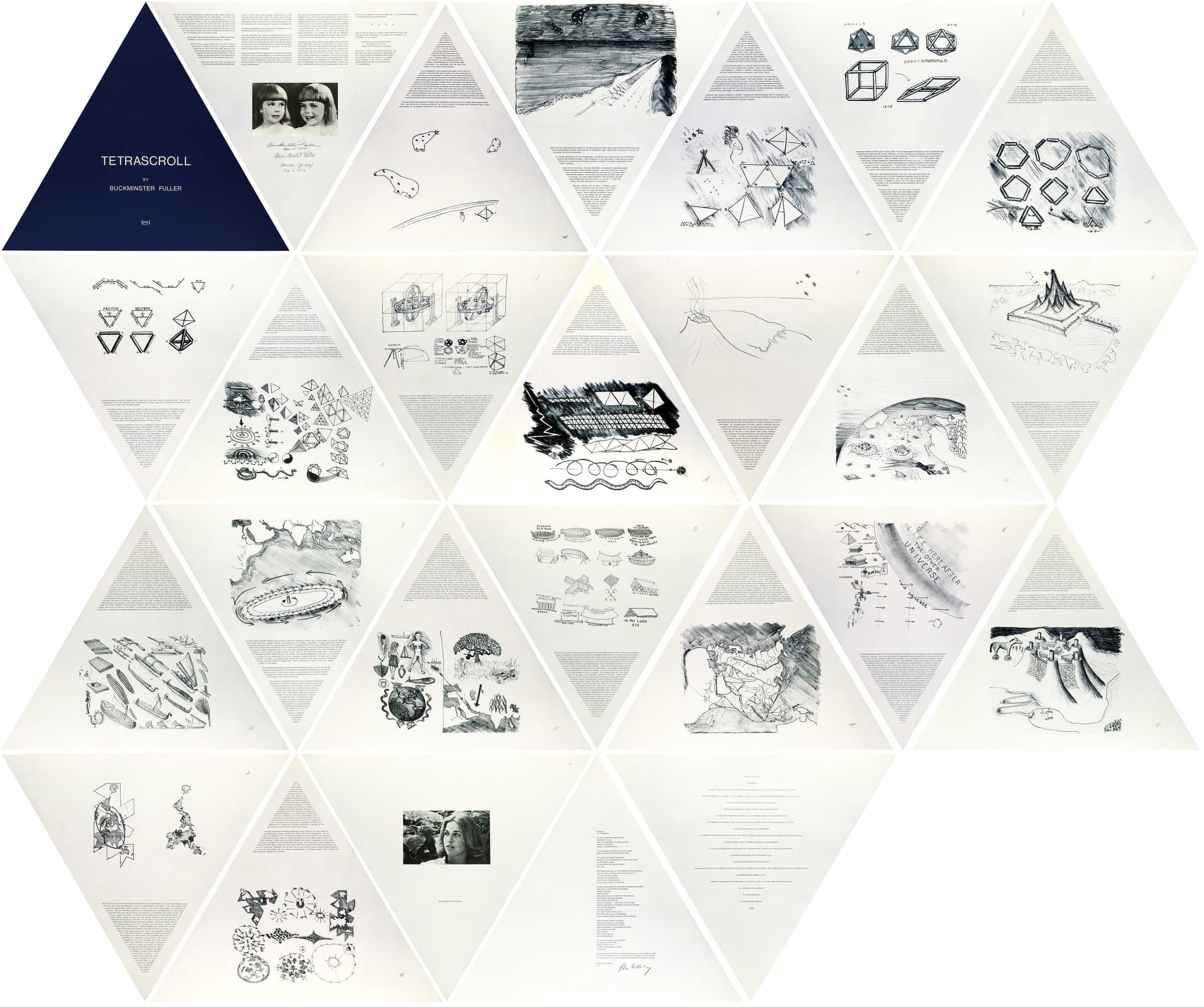About the Artist
Buckminster Fuller (1895-1983) is best known as the architect who invented the geodesic dome, but his diverse interests encompasses art, sailing, and scientific theory. His restless energy also worked against him; he was twice expelled from Harvard University, and spent much of his career moving from one government or corporate position to the next. His appetite for work is evidenced in his penchant for public lectures lasting up to ten house, twenty-six patents, and forty-three honorary degrees.
Fuller was eighty years old in 1975, when Edwin Schlossberg introduced him to Tatyana Grosman over tea. Fuller described his great enthusiasm for a project based on the tetrahedron that would unify his ideas of time, physics, synergy and the cosmos. Mrs. Grosman was intrigued, and committed Fuller to work on a lithographic stone, the first of many the massive, two-year Tetrascroll production process. More than thirty feet in length, this three-dimensional “book” was composed of twenty-one lithographs divided into twenty-six sections, each of which formed an equilateral triangle. Connected at the base, the entire structure was designed to be displayed freestanding. While Tetrascroll provided a platform for Fuller’s wide ranging inventiveness, it also marked an engineering breakthrough for ULAE printers, who found the means to give three-dimensional form to Fuller’s ideas.
